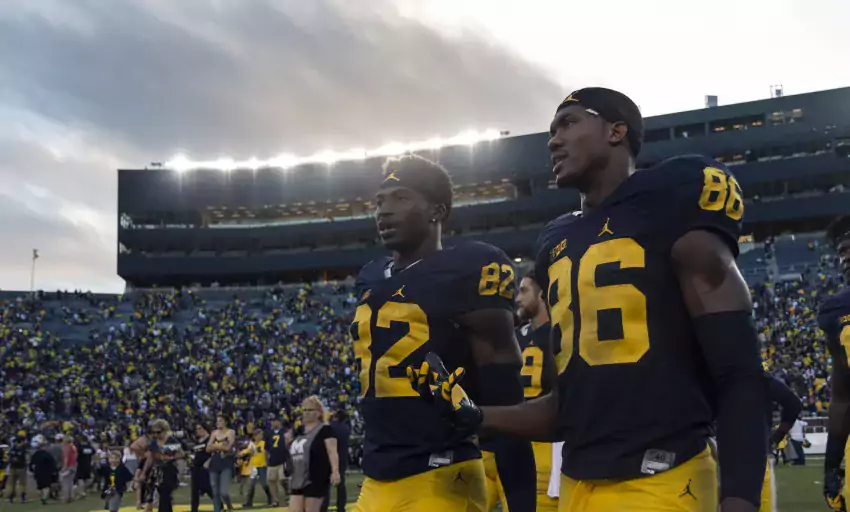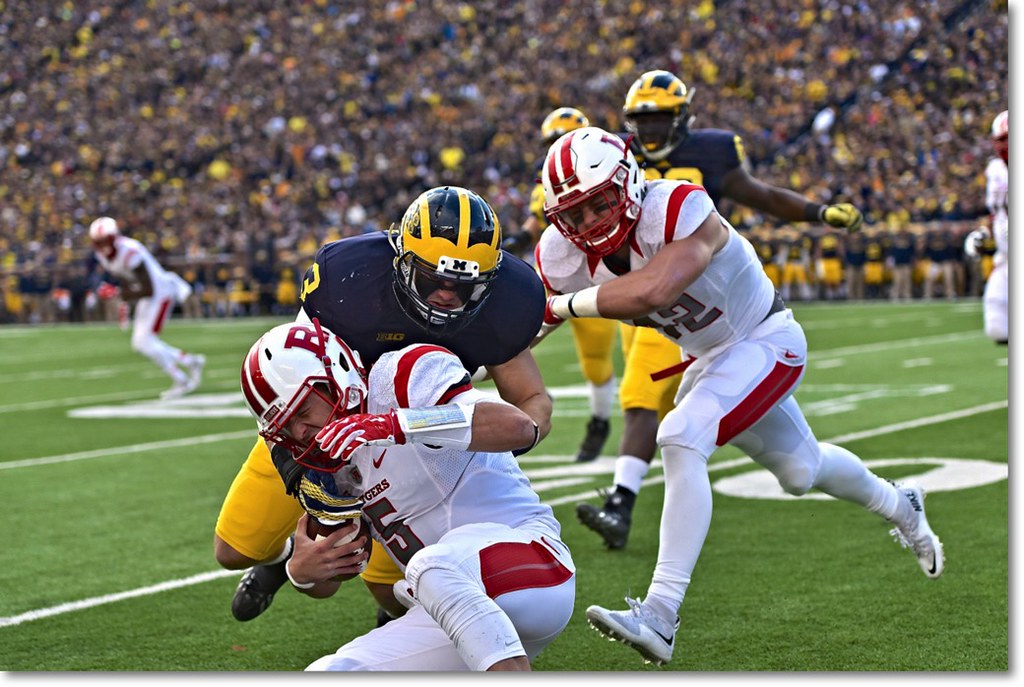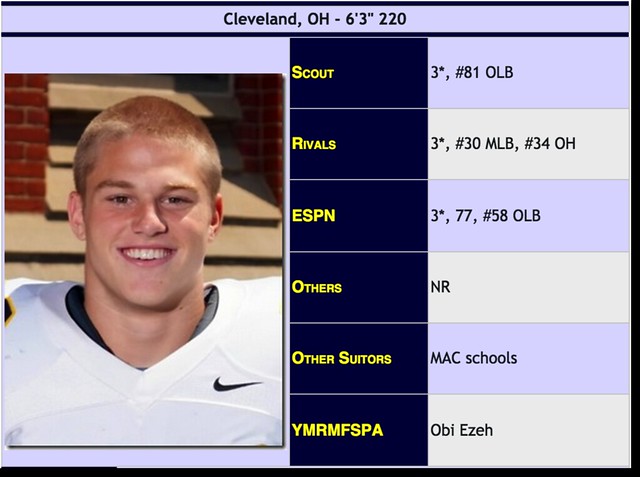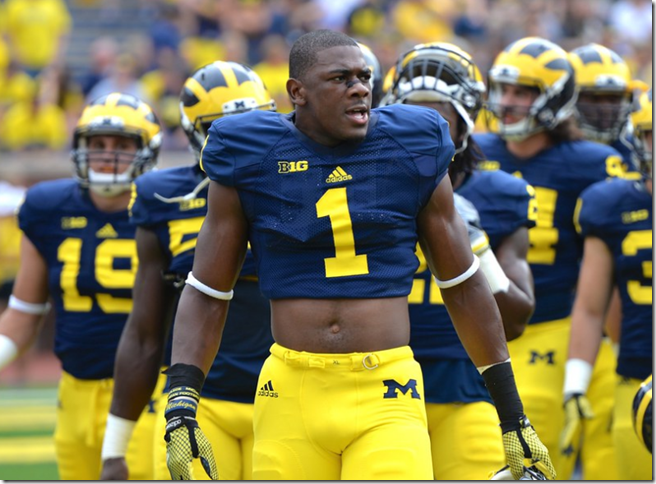recruits in retrospect

Previously: 2008 Offense, 2008 Defense, 2009 Defense, 2009 Quarterbacks, 2009 Offense, 2010 Offense, 2010 Defense, 2011 Offense, 2011 Defense
This used to be a thing on MGoBlog, until the 2011 class depressed Ace so badly that he gave up afterwards. Someone would have to be extremely desperate for content to dig this up and get caught up. Or just incredibly brave. And stupid. Probably all.
This was Brady Hoke's first real class, since he only had a few weeks in 2011 to tack on a few fliers to whatever had stuck around. The unicorn poop run of 2011 fueled belief that the goofy guy might actually be more clever than he let on, while the Tressel scandal in Columbus removed an important piece from the board. This was Hoke's opportunity to strike, and strike he did, building the core of what would become a senior-laden, ill-fated run at the championship in 2016. While Hoke was always better on defense, this was actually a pretty well-scouted as well as well-starred class, give or take a couple of tight ends who should have been something else.
Quick Glossary
YMRMFSPA: "You might remember me from such players as." The shorthand we use in recruiting profiles to say what type of player a guy would be if he works out.
404 Quarterback Not Found
Aaand he forgot the most important position. With Shane Morris committed for 2013 and Russell Bellomy, a late flip from Purdue, the only quarterback taken in 2011, this looked like quite the oversight at the time. I'm sure it wouldn't come back to haunt them.
The Greatest Receiving Recruiting Class Since…?
Move over, Terrell and Walker, because once you include the receiver they expected to be a tight end and the receiver they expected to be a running back, this class gave Michigan 5,573 yards and 41 touchdowns through the air (compare to the 1998 class's 4,586 yards and 40 TDs). The two African refugees, Amara Darboh (YMRMFSPA "Aw, hell, Jason Avant") and Jehu Chesson (Adrian Arrington), were cause to invoke the Legends of '98. Chesson's responses to reporters were wise beyond Craig Ross's years, Darboh got knocked for his speed in a coach quote now engraved on the FAKE 40 Times Trophy:
"He runs 4.42 but I wouldn't say that he's a burner by any stretch of the imagination," said Wilson. "He's a reliable guy that can make the tough catches for you. … he's a bigger physical presence. He's not a make you miss kinda guy."
Darboh's whole profile was like that: burly guy who's good with the ball in open space. This turned out to be a version of Avant who's really effective on smoke screens. Both stuck around into the Harbaugh era—Chesson because he arrived rail thin and redshirted, Darboh because an injury required a medshirt in 2013. Both peaked in 2015 and eschewed possible NFL opportunities for good but relatively disappointing (ungh, those drops in Iowa) senior runs. Darboh went in the 3rd round and remains with the Seahawks. Chesson, who's still pretty skinny, was drafted in the 4th round by the Chiefs and is lately hanging around on the margins of the league.
[Bryan Fuller]
Devin Funchess ("A less existentially depressed Jake Stoneburner, or Kevin Koger") was part of a four-man group of Farmington Hills Harrison (RIP) players to go Big Ten, and not even the highest-ranked receiver from his high school class. That was Aaron Burbridge, whom Michigan gave up on getting eligible for college and Michigan State somehow managed to get into school after a year of remedial stuff. Funchess was supposed to bulk up to tight end, whereupon he'd become what we want Eubanks to be this year. This wasn't as far-fetched as it appears in retrospect. The Michigan coaches thought Devin could bulk up to 240, he came in officially at 229, and his three-star profile certainly didn't give off an air of a three-and-done 1st round WR. Given zero depth at tight end, a redshirt seemed unlikely. Like his refugee classmates, the general excitement level was "High," with the suggestion he could challenge Mandich's all-time TE receiving yardage record. Because SIDs don't generally alter positions mid-season, this came to pass.
By October 2013, we had the "devin funchess wide receiver possibility" tag in existence, and soon after it was just the reality. In 2014 he switched from his tight end legends number to #1, spent most of that seasons either hurt or hurt enough not to play, and was drafted in the 2nd round. At his best he was hurdling Buckeyes and uncoverable by most cornerbacks for reasons just as apparent when we talk about Nico Collins today. After four years and 2,233 yards with Carolina he signed a one-year contract this year with the Colts.
The last receiver was the last guy added to the class. I was texting or gchatting or something with Brian as signing day was winding down and we were both complaining that jitterbug Dennis Norfleet wasn't offered. Then Michigan struck out on all of the top-end guys they were in on, added a DT, and finally Norfleet. Thus began a long battle between MGoBlog and Hoke's staff about using Norfleet as anything but the most obvious jet sweep target or dancing returner, whereat he got no TDs but set a record that will never be touched in TDs bogusly called back. By Hoke's end Norfleet was trying at cornerback and getting into academic issues that ultimately ended his career a year early.
[After THE JUMP: Who's going to block for a generation?]
Previously: 2008 Offense, 2008 Defense, 2009 Defense, 2009 Quarterbacks, 2009 Offense, 2010 Offense, 2010 Defense, 2011 Offense

Desmond Morgan significantly outplayed his recruiting ranking. [Fuller]
The good news: the defensive side of the 2011 hybrid RichRod/Hoke recruiting class turned out much better than the offensive side.
The bad news: that's a pretty low bar to clear.
This exercise will get a lot more fun next year, I promise.
Defensive Line: Roh 2.0 And A LB/TE/DE
In-state four-star DE Brennen Beyer was billed as a slightly less-hyped Craig Roh, which turned out to be a spot-on comparison in more ways than one. Like Roh, Beyer played early and often, appearing in 11 games as a true freshman on his way to 49 career appearances and 27 starts. Like Roh, Beyer bounced between defensive end and outside linebacker throughout his career. Like Roh, Beyer was a solid player who didn't post big numbers. If there's been a tighter YMRMFSPA fit, it's not by much.
The other two players listed as defensive linemen had uninspiring profiles and careers to match. Generic three-star DE Keith Heitzman's limited upside was apparent. Brian's projection:
May emerge into a depth defender in a few years.
After a redshirt, Heitzman was a low-impact rotation DE for a couple years, totaling 15 tackles before moving to tight end in 2014. He caught two passes that year, then Jim Harbaugh came in and told the fifth-year seniors they'd have to earn their spots; Heitzman wasn't a fan and grad-transferred to Ohio, where he posted decent numbers (22 receptions, 3 TDs) in his final season.
Columbus native Chris Rock (NTCR) saw his recruiting stock fall dramatically as a senior after he was initially billed as one of Ohio's top prospects. Rock left the program in the spring of 2012 before ever playing a down. In an usual move, he enrolled at Ohio State and walked on to the program after sitting out a year. He didn't see the field much in Columbus, either.
The star of the defensive class ended up being an unheralded recruit out of powerhouse Cleveland Glenville. The recruiting sites ranked Frank Clark as a middling three-star at tight end (Scout), outside linebacker (Rivals), and defensive end (ESPN). His profile features a rather fun series of headlines from the end of his recruitment:
Awesome sequence of articles from Rivals:
Save that face, yo.
Clark, of course, blew away those expectations in becoming Michigan's best defensive end. His college career ended in an awful way, with Clark getting kicked off the team for an ugly domestic violence incident. In spite of that, he went in the second round to Seattle and had an excellent rookie season.
[Hit THE JUMP for the rest of the post.]
Previously: 2008 Offense, 2008 Defense, 2009 Defense, 2009 Quarterbacks, 2009 Offense, 2010 Offense
The series continues with a look back at the defensive prospects in Michigan's 2010 recruiting class. Rich Rodriguez took 16 defenders in the class; more of them failed to make it to the opening kickoff of their freshman year (four) than advanced all the way to Senior Day (three).
I apologize in advance.
Those Who Stayed

Obi Ezeh!
Especially in retrospect, Jake Ryan's recruitment was bizarre. Ryan was the most productive defender on a state-title-winning Cleveland St. Ignatius squad that got plenty of exposure; he played next to Ohio State commit Scott McVey; his highlight tape provided more than a glimpse of what he'd become at Michigan. He looked a whole lot like Jake MF Ryan, minus the flowing locks.
Yet Ryan went unranked for much of the process, and even after a strong senior season only earned middling three-star rankings. Michigan didn't offer Ryan until he took an official visit a couple weeks before Signing Day. Ryan, holding only MAC offers, committed the next day. Reading his profile today makes me wonder if I unwittingly ingested all of the drugs:
Why Obi Ezeh? Ryan is a big, slightly clunky middle linebacker who will easily reach Ezeh's current 245 pounds and may outgrow the position entirely. As a recruit Ezeh was an anonymous three-star in about the same range Ryan is; he was also a sleeper-type pickup who had not been on anyone's radar before Michigan grabbed him. Ryan is praised for his vertical attacking and dogged for his ability to cut through the trash sideline-to-sideline or effectively cover zones; Ezeh's career is ably summed up by those critiques.
Ryan has some assets Ezeh doesn't: a high school career at linebacker (Ezeh was mostly a running back), a head start on the system he'll be playing in, and Greg Robinson as a position coach. Hopefully he'll have some consistency in coaching as well.
Notably, Greg Robinson as a position coach was listed as a positive. Greg Robinson as a defensive coordinator was... not.
Jibreel Black's profile spent a lot of time hoping he'd become at least a poor man's Brandon Graham. While Black didn't come close to Graham's heights, he was a solid contributor his last three years, and he could've been more productive if Michigan's issues with D-line depth didn't force him into a role as a 275-pound nose tackle for much of his senior season. Black is one of many players from the Rodriguez/Hoke era whose career would've benefited from a redshirt year he wasn't afforded.
The career of Courtney Avery saw him go from promising freshman corner to clearly undersized spot starter to senior utility man—he'd finish his time at Michigan with 19 starts, five of them at safety in 2013. Avery was also a two-time Academic All-Big Ten selection, which shouldn't come as a surprise since he flipped his commitment from Stanford to Michigan; his high school coach thought very highly of him:
“He’s the type of kid that if he wants to be president of the United States one day, he will be. I got two compliments I could give him. That’s the first, and the second is if my daughter was 18, she could date him."
"Thanks, Coach. I'm deeply uncomfortable."
[Hit THE JUMP, if you dare.]

25